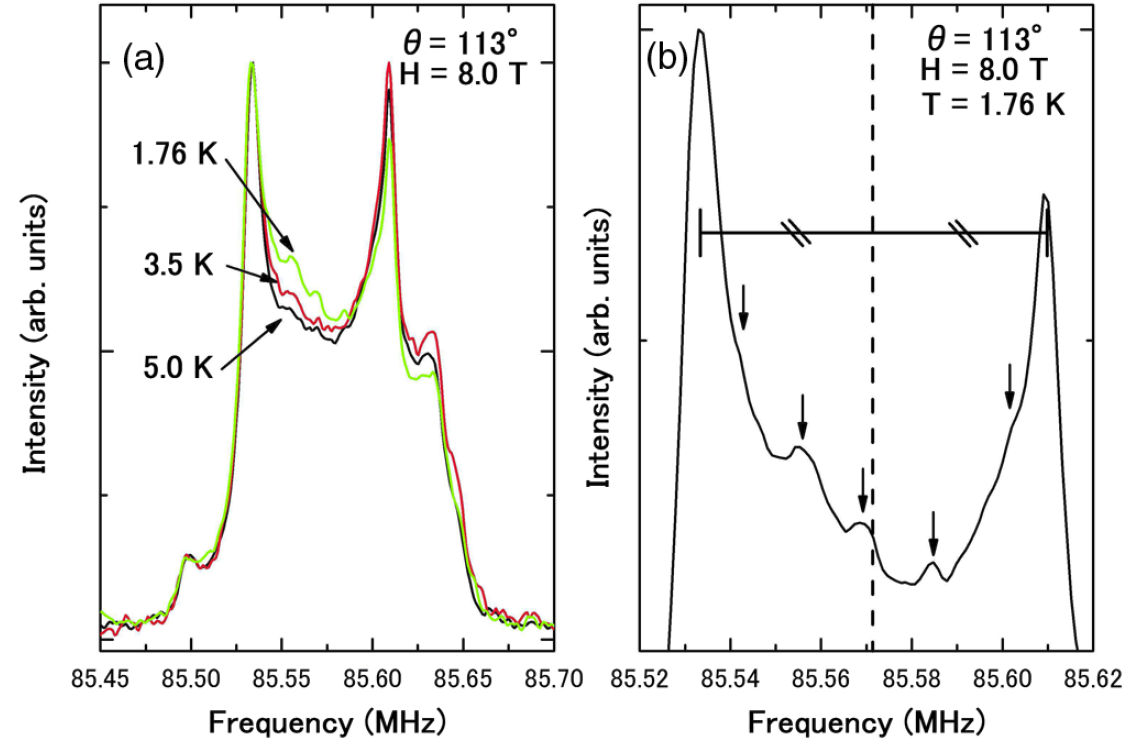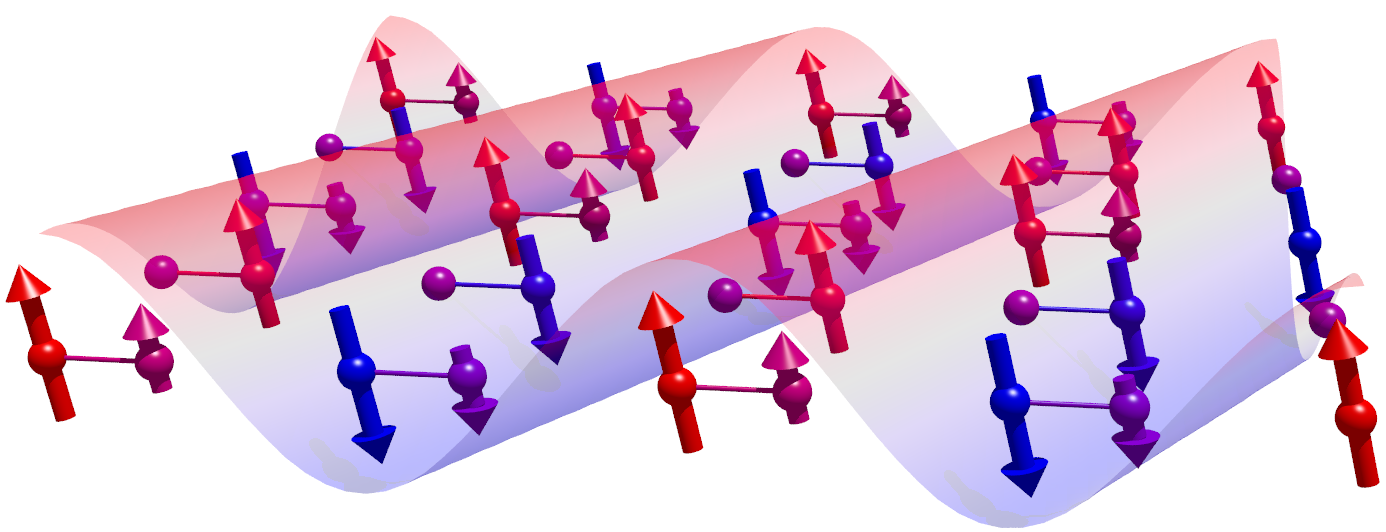Topics
- Superconducting fluctuations in κ-(BEDT-TTF)2Cu[N(CN)2]Br
- Commensurability of SDW in (TMTSF)2PF6
- Charge ordered state in β''-(BEDT-TTF)3Cl2⋅2H2O
- Correlation between non-Fermi-liquid behavior and anti-ferromagnetic fluctuation in (TMTSF)2PF6
- Low-frequency dynamics of κ-(BEDT-TTF)2Cu(NCS)2
- Zero-gap-semiconductor state of α-(BEDT-TTF)2I3
A quasi-one dimensional organic conductor (TMTSF)2PF6 shows a spin-density-wave (SDW) state at ambient pressure below 12.5 K. In the SDW state, spin density is not uniform any more, and shows the sinusoidal pattern in space. The previous NMR experiments evidenced that the period of spin-density modification is incommensurate with lattice. This incommensurate SDW state was considered as the ground state of (TMTSF)2PF6. However, since the low-temperature anomaly was reported from specific heat measurement at 4 K, the real ground state would appear in the SDW state below 4 K. We therefore performed 13C NMR experiment on (TMTSF)2PF6 to investigate the magnetic properties of low-temperature SDW state (frequently refereed to as subphase).

The NMR spectrum above 4 K is understood as the typical U-shape spectrum for incommensurate SDW state, which shows two main peaks smoothly connected in between. We measured the NMR spectrum downt to 1.76 K for the first time, and found the 5 small peaks appearing between 2 main peaks (above figure). We explained these small peaks by taking commensurate magnetic structure into account.

The order vector for incommensurate SDW state was reported to be very close to the commensurate order vector (0.5, 0.25, 0). In the right figure, we show the schematic picture of the magnetic structure for (0.5, 0.25, 0) state. The balls and arrows indicate respectively the positions of TMTSF molecules, and spin density at each site. We will see there are 3 different size of up arrows, 3 down arrows, and zero. These 7 different arrows result in 7 peaks in NMR spectrum, which are 2 main peaks and 5 small peaks between them.
We should note that the intensity of 5 peaks are much smaller than that of 2 main peaks. This fact indicates that the incommensurate SDW state remains even below 4 K, and commensurate (0.5, 0.25, 0) state appears only in a small part of the sample. However, the anomaly was observed at 4 K in the nuclear spin-lattice relaxation rate, which is determined by the average of entire sample. How does the tiny amount of commensurate SDW state affect the properties of entire sample? We introduced the discommensurate model to answer this question.
In the incommensurate SDW state, phason excitations are gapless. The gapless excitations are pinned by commensurate droplets in the discommensurate model. The phase locking by commensurate region induce energy gap even in the incommensurate region, then the phycical properties become similar to that for commensurate state in entire sample. For the discommensurate state to realize, the commensurate region should appear in a microscopic length scale. Our experimental result shows the microscpic coexistence of commensurate and incommensurate state in (TMTSF)26 below 4 K.
These results were published in a Letter entitled "Commensurability of the Spin-Density-Wave State of (TMTSF)2PF6 Observed by 13C-NMR" Phys. Rev. Lett. 110, 167001 (2013).